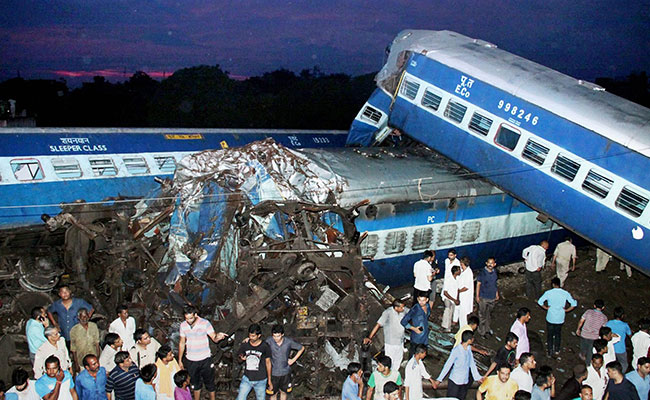Throwing railway safety to the winds
Hit by railway accidents with alarming regularity, India is in the midst of a massive infrastructural transformation of one of the world’s largest railway systems, to prevent tragedies.
Not a day passes without India’s Railway Minister Suresh Prabhu discussing, debating or launching the topic of modernisation of the Indian Railways. On April 19, Prabhu was busy inaugurating over half a dozen facilities in Tamil Nadu and Kerala through video conferences. A few hours later, Prabhu was hit by the tragic news of the derailment of the Puri-Haridwar Utkal Express at Khatauli in the Muzaffarnagar district of Uttar Pradesh. The accident left 23 dead and over a 100 injured!
Soon, Prime Minister Narendra Modi condoled the tragic deaths. Ex-gratia payments were announced to the kin of the dead and the injured, and a commission of inquiry ordered. Also, a few officials manning the Indian Railways were suspended.
These are normal steps taken after every tragic accident. What has also become a norm are railway accidents in India, which seem to occur with alarming regularity. So far, seven big railway accidents have hit different parts of the country since January 2017.Remember, India has the fourth longest system of railways in the world. It is owned and operated by the state-owned Indian Railways and includes an operating route length of more than 65,000 km. The network carried about 23 million passengers and hauled nearly 3.02 million tonnes of freight, every day, in 2015.
It is suggested that the derailment happened due to lapse or negligence by those taking care of track maintenance activities at the Khatauli yard.
The Kalinga-Utkal Express accident is not a one off incident. Out of the 436 major train mishaps that have occurred in the last five years, 242, that is, 55 pc were due to derailments — 49 in 2012–13, 53 in 2013–14, 62 in 2014–15, 65 in 2015–16, and 78 in 2016–17.
A discussion paper prepared by the National Institution for Transforming India (NITI Aayog), blamed human failure for these railway disasters.
“Human failures contribute to about 87 pc of all accidents as compared to failure of equipment, technology or other reasons. This failure can either be on the part of the railway staff (such as gangmen, loco-pilots, traffic and commercial staff, and so on) or non-railway people,” said a note prepared by Bibek Debroy, member NITI Aayog and Kishore Desai, an officer on special duty, NITI Aayog.
Efforts are underway to implement safety norms. Railway Minister Suresh Prabhu had launched ‘mission zero accident’ in the 2016–17 Rail Budget, to carry out a special drive to curb accidents. The Rashtriya Rail Sanraksha Kosh, a special safety fund, was created in the 2017–18 budget with a corpus of INR one trillion over a period of five years, to finance critical safety-related work.
The measures include replacement of over-aged assets with high-end technology.
A key step is the introduction of sophisticated LinkeHofman Busch (LHB) coaches, replacing the conventional ones in a phased manner, to reduce the chances of derailment and to bring down the possibility of grievous injury or death in case of accidents, such as the one that took place in Khatauli, Prabhu asserted.
The production target of LHB coaches has been raised from 1,697 in 2016–17 to 2,384 in 2017–18. It is expected to go up to 3,025 LHB coaches in 2018–19.
Hope these measures drive India towards zero accidents and safety measures are implemented seriously without throwing caution to the winds.











